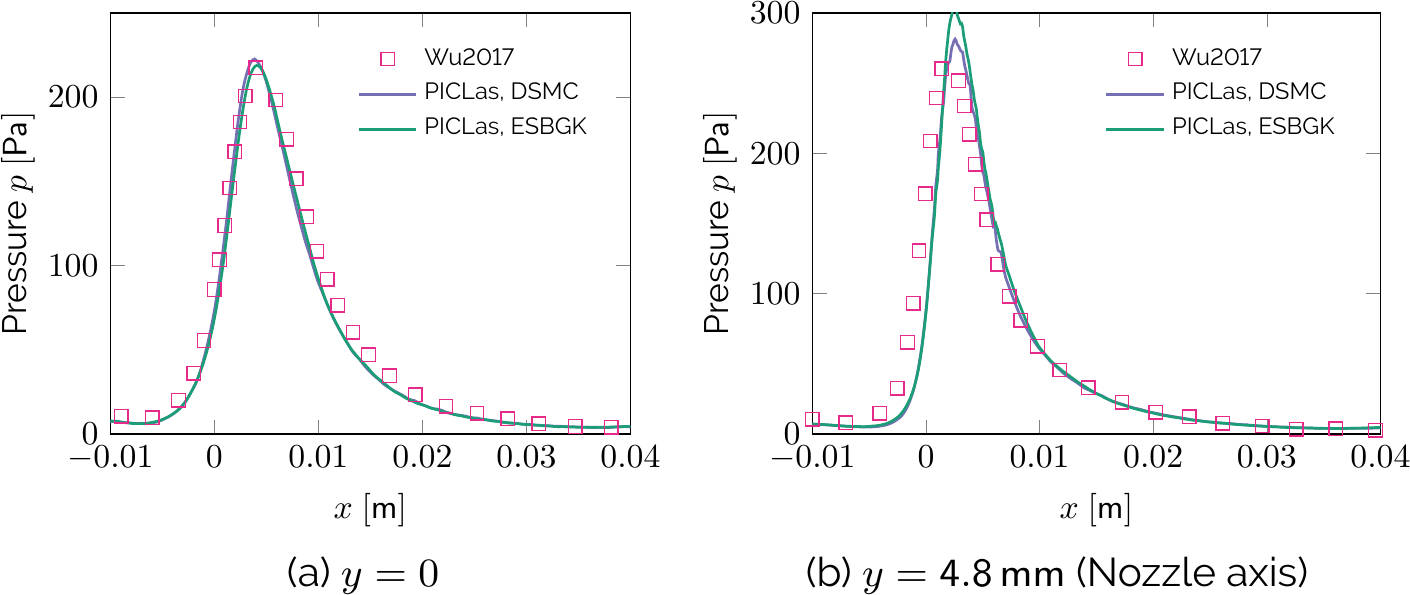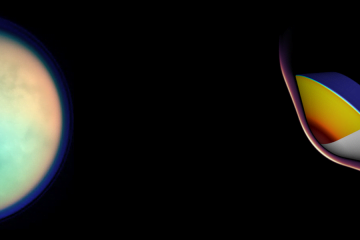Plume impingement plays a major role in the development of spacecraft systems due to the possible contamination of mission critical elements such as solar panels or scientific instruments by a thruster exhaust. Numerical simulations estimate the area of effect of a single or a system of thrusters and help in the optimization of the spacecraft configuration. The application case presented in the following validates the Direct Simulation Monte Carlo (DSMC) and the particle-based ellipsoidal statistical Bhatnagar-Gross-Krook (ESBGK) methods in PICLas with experimental measurements.
Experimental & numerical setup
A schematic of the experimental setup by Wu (2017) is shown on the left. Here, h = 5 mm denotes the distance to the centre of the nozzle exit area. The angle of 20 degree is relative to the rotational axis of the nozzle. The dimensions of the flat plate are 60 by 60 mm (x-y) and the computational domain additionally expands into z by 10 mm. In the dual configuration, the nozzles were separated by 9.6 mm with y=0 at the centre. Only half of the computational domain was simulated, exploiting the symmetry in the xz-plane. The air inflow conditions were defined at the nozzle exit plane.
Surface pressure due to plume impingement
For this case, simulations were performed with the standalone DSMC and ESBGK methods. In the following qualitative figures, the methods are compared in terms of the surface pressure, where the DSMC and ESBGK simulation results are given on the upper and lower half, respectively. Good agreement can be observed between the two methods.
Comparison with experimental measurements
To validate the simulation results, they are compared with experimental measurements obtained by Wu (2017) with pressure-sensitive paint. The figures below show the pressure along the center axis (y=0) and an off-axis (y = 4.8 mm) of the plate for the single and dual configuration.
Single Plume
Dual plume
Both simulation methods show good agreement with the experimental results and thus demonstrate their capabilities for the predictive simulation of plume-plume interaction and plume impingement.
More information about the underlying theory and modelling can be found here:
- Pfeiffer, M., Mirza, A., & Nizenkov, P. (2021). Multi-species modeling in the
particle-based ellipsoidal statistical Bhatnagar–Gross–Krook method for
monatomic gas species. Physics of Fluids, 33(3), 036106. - Wu, J., Bitter, M., Cai, G. B., He, B. J., & Kaehler, C. (2017). Investigation on aerodynamic force effect of vacuum plumes using pressure-sensitive paint technique and CFD-DSMC solution. Science China Technological Sciences, 60(7), 1058–1067.






